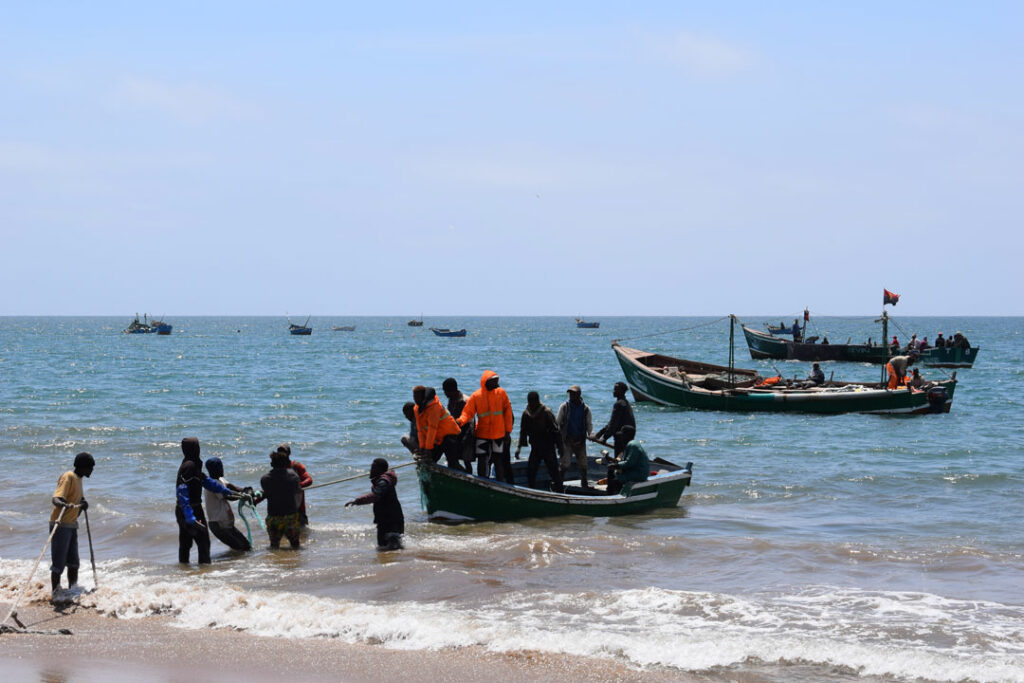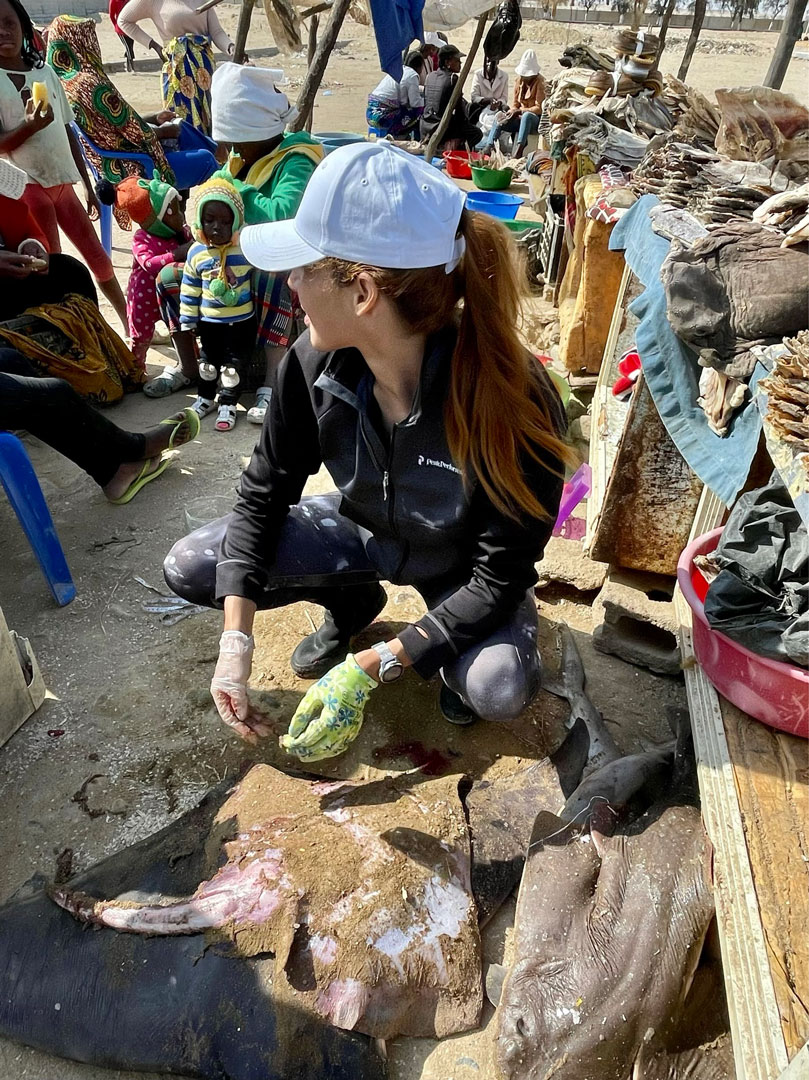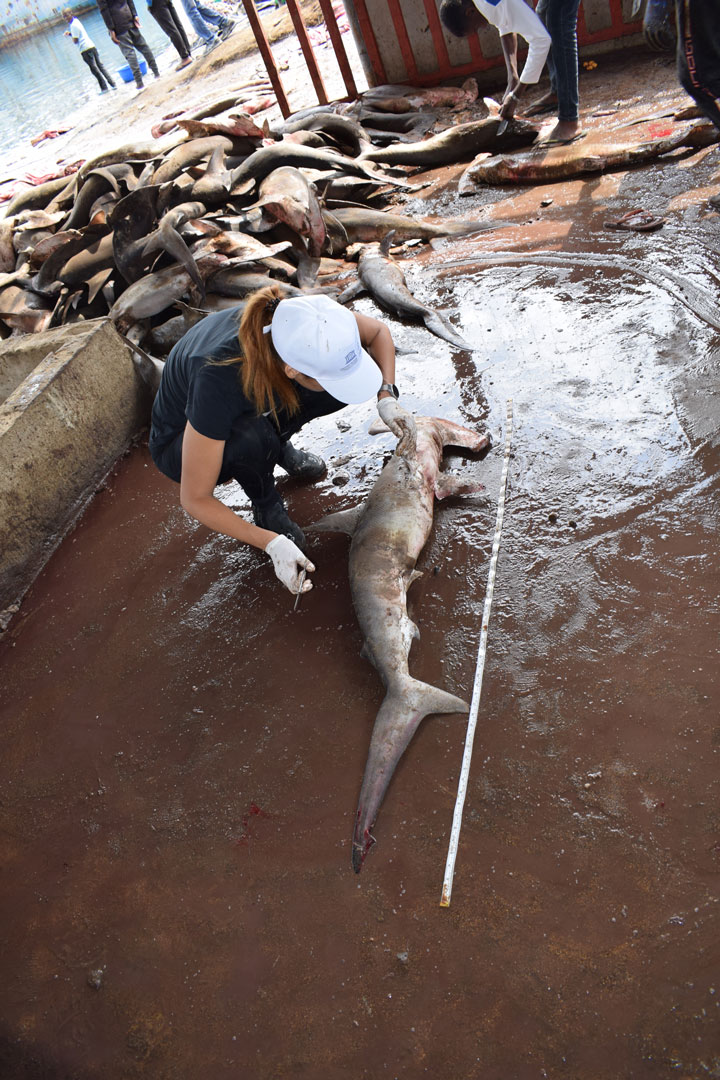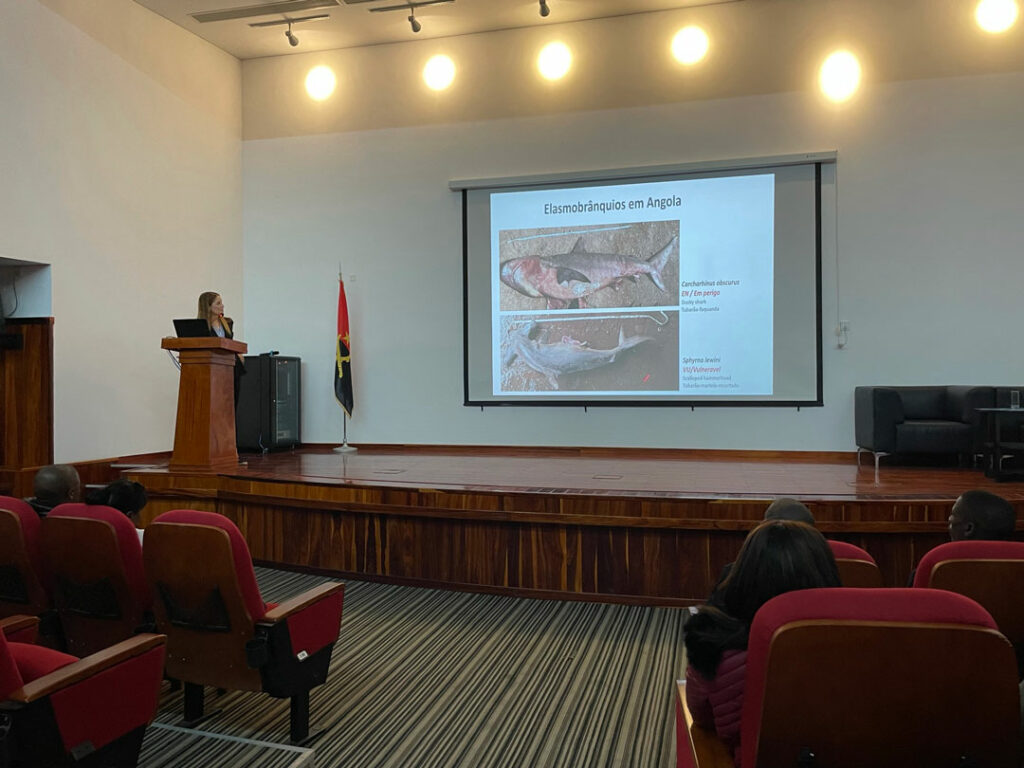New research location means finding shark and ray landing sites!
The Angola Elasmo Project previously managed to get an insight into the shark and ray small-scale fisheries operating along the area of Luanda (North of Angola). But, as we are focused on a new region, Namibe (South of Angola), we require a new assessment, as fishing characteristics and species diversity might differ!
There is no data on elasmobranch small-scale fisheries’ landing locations in Angola. Thus, it is vital to explore all the fish landing site possibilities. Hence, we underwent several explorative trips in the region of Namibe to visit potential sampling places. Some sites were extremely difficult to access, took time and effort, and no significant elasmobranch fisheries were observed. Furthermore, some sites have a closed-door policy and involve the establishment of connections with locals to gain access to them.

Small scale fishery landing on a potential elasmobranch site. Photo © Ana Lucia Furtado Soares.
While some field work locations are not easy to access and sometimes difficult and overwhelming to work at, there was a positive response from the fishers and communities in the region of Namibe, allowing data collection to happen. Fishers were extremely helpful after I gained their trust and asked permission from the landing site manager (usually an older fisher from the community).

Biological data collection on sharks and rays in the region of Namibe. Photo © Ana Lucia Furtado Soares.
After several conversations and time directly spent with communities, it becomes clear that unsustainable fishing practices are common, such as indiscriminately fishing. Nevertheless, fishers state that “there are no more options”, “we do not know better”, and “if we had another way to make a profit, we would happily change, as we understand it’s wrong”.

Tissue sample collection on a hammerhead shark in the region of Namibe. Photo © Ana Lucia Furtado Soares.
Our friends, the fishers!
Small-scale fishers are often perceived as the “enemy”, but so far, the tale seems different in this area. Communities are trying to reach their livelihood during a drought of extreme hunger in the country, with increased poverty and population migration to coastal areas. These populations often engage in unsustainable fishing practices, exploiting endangered species, due to the lack of livelihood options and good fishing practices information. Hence, increasing awareness of the importance and threats to elasmobranchs at a local and regional level through capacity building and public involvement is so important.

Angola Elasmobranch Project capacity building event at the university of Namibe. Photo © Ana Lucia Furtado Soares.
